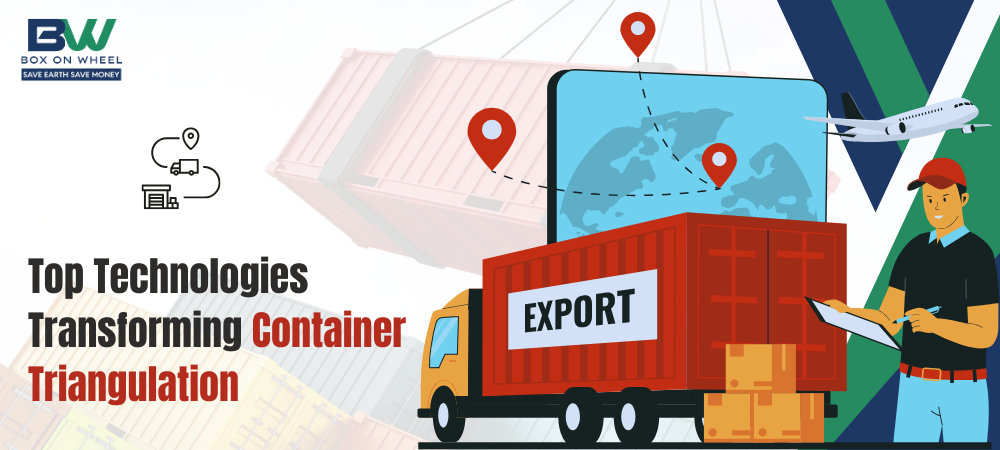Container triangulation is a system that helps track containers during their journey. Containers carry a wide range of products, including food, clothes, and electronics. They move between different transport modes like ships, trucks, and trains. In the past, people had to manually track containers, often with paper logs. As trade increased, this system became slow and inaccurate. Today, technology has made container triangulation faster and more reliable. It ensures that companies know exactly where their goods are, at any time.
The Role of Digital Platforms
Digital platforms are key in modern container triangulation. These platforms collect and display data from various sources. They provide a clear view of container movements, helping businesses track their goods. Digital platforms also allow quick responses to issues.
Centralized Dashboards
Digital platforms provide a single view of all container data. This helps companies track everything from one place. Users can see where their containers are, in real-time.
Real-Time Alerts
If something goes wrong, digital platforms send alerts. These alerts notify the team immediately, allowing them to take action quickly.
Data Integration
Digital platforms pull data from ports, carriers, and other systems. This ensures accurate and up-to-date tracking information at every step.
These platforms help companies to reduce errors and track shipments more easily.
IoT Devices for Real-Time Tracking
The Internet of Things (IoT) allows businesses to track containers in real-time. Sensors and GPS devices are attached to containers. These devices provide live updates about their location and condition.
Continuous Monitoring
IoT devices give constant updates on the container’s location and status. If the temperature or humidity inside a container changes, an alert is sent. This is especially useful for sensitive goods, like food or medicine.
Improved Decision-Making
Real-time data helps businesses make quick decisions. If a delay occurs, they can adjust their plans immediately. This helps avoid further delays or damage to the goods.
IoT makes container tracking more reliable, reducing risks of losses and delays.
AI and Machine Learning for Efficiency
Artificial Intelligence (AI) and machine learning are helping companies improve container tracking. These technologies help businesses predict demand and optimize shipping routes.
Predicting Demand
AI analyzes past data to forecast future needs. It helps companies know how many containers they will need and when. This reduces overstocking or shortages.
Route Optimization
Machine learning helps companies pick the best routes for shipments. It looks at factors like traffic, weather, and port conditions. This reduces delays and cuts down fuel costs.
AI and machine learning make operations smoother, saving time and money.
Tagging Systems for Easy Identification
Tagging systems use technologies like RFID (Radio Frequency Identification) and barcodes to track containers. These tags give each container a unique identifier, making tracking easier.
Automated Tracking
RFID tags and barcodes can be scanned automatically. Containers are tracked at different points, such as ports or warehouses. This reduces human errors and speeds up the process.
Seamless Integration
Many tagging systems work with digital platforms. The data from the tags automatically feeds into the tracking system. This gives logistics teams real-time information without manual input.
Tagging systems have simplified container tracking, making it faster and more accurate.
Benefits of Modern Container Triangulation
The shift from manual to digital container tracking has brought many benefits. Logistics Companies can now track their shipments in real-time, reducing the risk of delays or losses.
- Real-Time Visibility: With IoT, AI, and digital platforms, companies have real-time visibility. They know exactly where their containers are and can quickly address any problems.
- Improved Efficiency: Automated tracking reduces human errors. This saves time and ensures that goods arrive on time.
- Cost Savings: By optimizing routes and reducing delays, companies save money on fuel and labor costs.
These benefits have made container triangulation an essential part of global trade.
Conclusion
Container triangulation has come a long way from manual paper tracking. Technologies like digital platforms, IoT, AI, and tagging systems have revolutionized the process. Companies can now track containers in real-time, ensuring that goods arrive safely and on time. These technologies also help businesses save money and reduce delays.
While there are challenges in adopting these systems, the benefits are clear. As global trade continues to grow, more companies will rely on these technologies to keep their supply chains running smoothly. Businesses now can better manage their shipments and meet the demands of modern trade.

